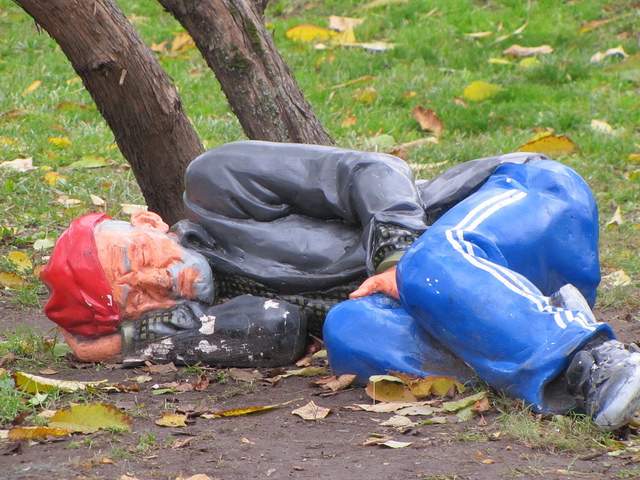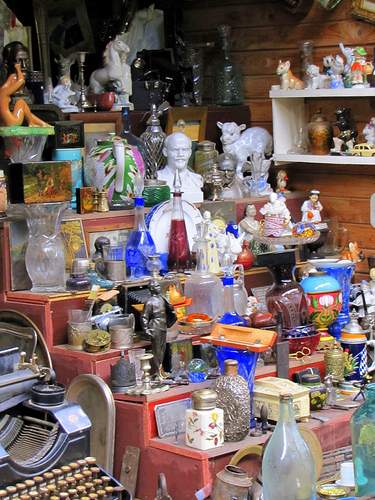No one comes here and doesn’t go to the Red Square, skips out on St. Basil’s, or forgoes the Kremlin. The Moscow Metro, deemed a world heritage site in 1994, is an absolute must, as is a stroll down Old Arbat, a pedestrian street with a great mix of past (Pushkin’s house, buskers playing traditional instruments) and present (three Starbucks within a mile of each other, break-dancers). With little effort, Moscow stuffs an itinerary.
The refurbished Balshoi Theatre across from Revolution Square; the Cathedral of Christ Our Savior, blown up to build a tribute to communism, converted into the world’s largest open air pool, and rebuilt in full opulence as of 2000; Kitai-Gorod, Moscow’s Chinatown, largely devoid of dragons and spring rolls but full of Orthodox Cathedrals; Stalin’s Seven Sisters skyscrapers, monuments to Soviet architecture and bygone dreams of grandeur; museums a-plenty, be it history or art or social injustice; and kitschy souvenirs the world over—It’s a city that delivers.
However, most travelers want to do as the locals, and to experience Moscow as the Muscovites do, you must go to a park, one of many throughout the city, and take a walk. Moscow has a park culture unlike anything, any city I’ve ever known. Here, people relish the stroll, lavish their recreational zones with attention, and use these often grandiose spaces as the social hub of weekend activity. Amazingly, each park offers a noticeably different experience, and every local has their favorite. As an expat, these are mine.
Gorky Park

Gorky Park, officially known as Gorky Central Park of Culture and Leisure, is the most recognizable to the rest of the world. The park, named after Russian socialist author Maxim Gorky, received notoriety in 1983, when William Hurt starred in a murder-mystery film, Gorky Park. Within walking distance (45 min.) of Red Square and on the river, it is the Moscow park.
Gorky is big, 300 acres, and while it used to be littered with dated amusement park rides, new kiosks and cafes (unfortunately, subway seems to have won the bid to be amongst these businesses) are set up along walkways that meander throughout a great myriad of oddities: the massive Lenin gate, Statue Park, a space shuttle mock-up, and Soviet architecture along the river.
In the wintertime, the park transforms. A network of sidewalks is converted into an uber ice-skating area with winding lanes to explore and fences to hang on to, as all levels of skaters whiz in all manner of direction. There is an annual ice sculpture competition, and in 2011, just inside the park entrance, snow enthusiasts created an amazing collection of hundreds of snowmen.
Victory Park

To the east of the city center is Victory Park, built to commemorate the USSR’s success in the Great Patriotic War, what other countries refer to as World War II, but what Russia remembers as its defeat of the Nazis. Whatever the history, the park has a spectacular monument, a three-sided obelisk that juts into the air and plays the center point of a wide, imposingly empty plaza.
Behind the monument, the park opens up into massive paths that cut through small groves of forest. The pavements fill with in-line skaters who congregate for downhill rides, zooming amongst the pedestrians. However, the main attraction has to be the old Soviet military vehicles, including planes, tanks, and massive railway guns. Even locals enjoy perusing them again.
Additionally, along the entranceway, to the left of the plaza, there is a small cove of outdoor eateries and beer taps. The tables fill up as people sit for ice creams, hot dogs, and cold drinks while admiring the tall monument. On the south side of the park, the hills drop into a valley, creating some pretty impressive vistas to go along with military prowess.
VDNKh Park
VDNKh, in north Moscow, dating back to 1939, was originally meant to be an exhibition of the great achievements of the Soviet People’s economy, but it was so successful the park became an official permanent fixture. What remains are an impressive entrance gate, great halls honoring former Soviet countries, all rather majestic amongst the seemingly more popular carnival rides.
This park, unlike others, lacks the huge swaths of greenery, but it makes up for it with attractions. There is a large tribute to the Russian aeronautics program, complete with the massive Vostok rocket standing as an outdoor display. There are celebratory pavilions for meat, hunting, atomic energy, and at the center, the wildly decadent Fountain of the Friendship of Peoples.
Most people, though, seem to come here for the rides and carnival atmosphere. There are lines of fair games to play, roller coasters to ride (Russians call them American mountains and believe Americans call them Russian mountains), and a gigantic Ferris wheel that towers over everything in the area. There is also plenty of shashlik, Russian barbecue skewers, available.
Izmailovo Park
 In the west, Izmailovo Park is a massive sprawl that features the typical nature-y goodness that city-dwellers crave, but it is also neighbor to some fantastic open-air shopping. Izmailovo Market has all the Russian tourist tat for a fraction of the downtown prices, as well as awesome rummage shops, full of Soviet memorabilia, second-hand goods, and great characters to meet.
In the west, Izmailovo Park is a massive sprawl that features the typical nature-y goodness that city-dwellers crave, but it is also neighbor to some fantastic open-air shopping. Izmailovo Market has all the Russian tourist tat for a fraction of the downtown prices, as well as awesome rummage shops, full of Soviet memorabilia, second-hand goods, and great characters to meet.
The park can be reached either from two Metro stations: Partizanskaya or Izmailovskaya. Near Partizanskaya, there is the market, pubs, and restaurants, as well as the parks decaying attempt at amusement, crusty water bumper cars, and a Wild West area. Further down the Metro line, Izmailovskaya drops you at the parks massive forest, better for a shady stroll with locals and al fresco eating/drinking options.
For a tourist, the market makes the park the go-to. Not only is it good shopping, but the structure — all onion domes and swirling colors — is a sight in itself. A bit quainter, to the right of the market, there is a small cut-off section of the park, which has nice embankments along the Serebryanka River (good picnicking) and some pretty noteworthy buildings to see.
Tsaritsyno Park & Kolomenskoye Park
Heading south of the city center, there are two beloved spots within a couple of stops of each other. Tsaritsyno and Kolomenskoye could be visited in one rather taxingly keen day, or they could be two enjoyable half-days, maybe relief from squinting in museums or the Moscow Metro commute. These two are more peaceful and lack the carnival spectacle of the others.
Tsaritsyno Park now plays host to the rather controversially rebuilt Balshoi Palace of Catherine the Great, a structure which had never been finished in the first place. Of course, Muscovites don’t come here for the architecture anyway, but rather they wander around the park’s massive lake, enjoy the scenery, and in the winter, partake in a bit of ice-fishing or sledding.
Kolomenskoye Park, an ancient location and one of the first known places of inhabitance in Moscow, is now famed for its wooden structures, which arrived from northern Russia in the 20th century as a conservation effort. The park also has the hilltop Church of the Accession, some pretty spectacular views of the Moscow River waterways, and lots of open space to stretch out.
As a tourist, in a city that drains your pocketbook, parks can not only offer an escape from the bustle but also from the gouge, both of which are undoubtedly why locals make such prominent use of their beautiful public spaces. If you are in Moscow for any amount of time, it’s definitely worth visiting one or all of them. In my opinion, there is no experience more culturally true.
Muscovites love going to the park. It’s an outsider’s glimpse into the life of today’s urban Russian, too busy to make it to the dacha (small country cabin) but still suffering from the concrete starkness of an overcrowded city. When free time arises, most folks simply aspire to take a walk with their friends in their favorite spots, and Moscow provides quite a few to choose from.
Jonathon Engels, a patron saint of misadventure, has been stumbling his way across cultural borders since 2005 and currently resides in the mountains around Antigua, Guatemala. For more of his work, visit his website and blog.
Photo credits: Argenberg, all others courtesy of the author and may not be used without permission
